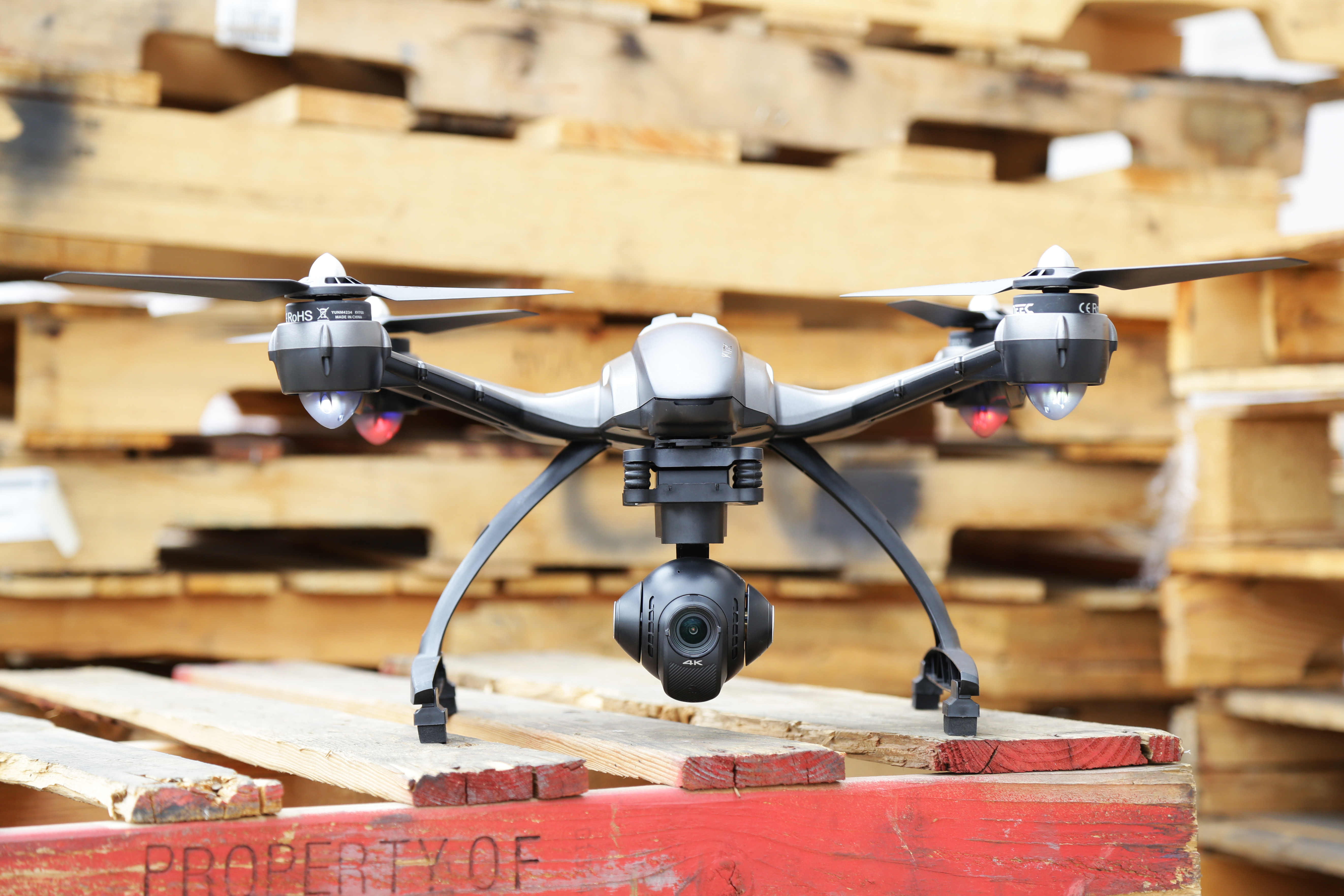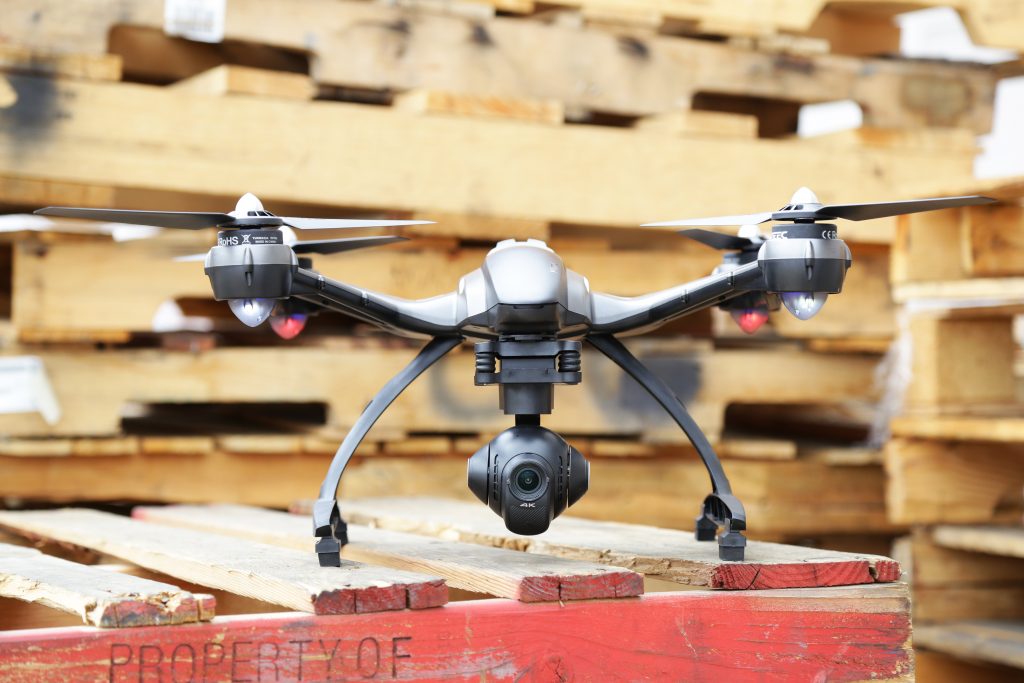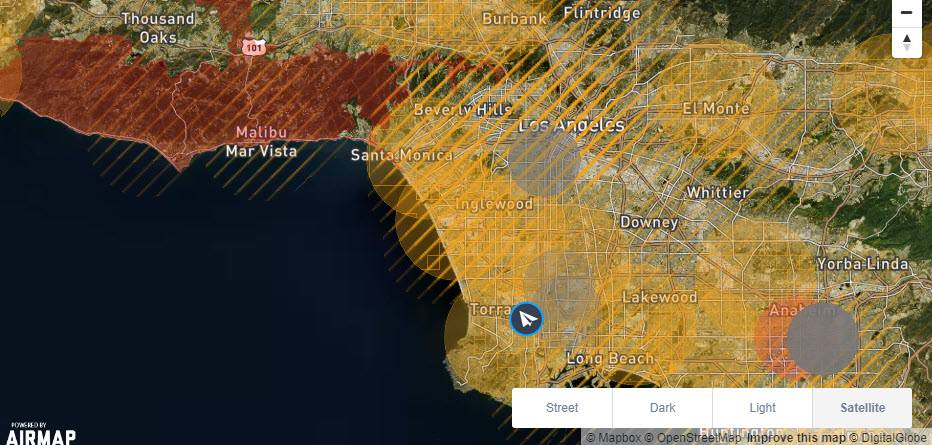

We’ve all seen the drone fail videos that are so popular on YouTube, and undoubtedly laughed at the misfortune (and/or foolishness) of those hapless pilots. Invariably, watching those videos prompts the question “What were they thinking?!”
Well, chances are they didn’t expect to crash their new drone, but they were surely missing a very valuable lesson on what not to do with a drone. To help new pilots practice safe drone flight, we compiled a list of the top 10 things new pilots should never, ever do.
Although it might look like a remote-controlled toy, most drones really are not toys at all, and remembering this goes a long way to making smart piloting decisions. Unlike a land- or water-based vehicle, when an aerial vehicle loses the input it doesn’t just slowly come to a halt and idle, it has spinning blades and gravity to contend with. Taking a little time to become acquainted with the proper local regulations and aircraft specifics is critical to ensuring a safe and legal flight for all. Nobody wants to end up as a mocked figure on the internet or in jail, after all.
Never fly before reading the manual
I know, I know. The last thing you want to do when you get an awesome new gadget like a drone is open it up, and plop down to read the manual cover-to-cover. Anyone like myself would be ripping the package open to get hands-on with the new purchase ASAP, but drones are a different beast. If you don’t know that switching from one mode to another mid-flight disables obstacle avoidance (for example), it could have some serious consequences.
Knowing your equipment and its limitations is really the first step to success in any area, especially when it comes to something as complex as a flying machine. Besides, most drones come with the battery only partially charged so there is plenty of time to read while waiting for the batteries to charge up.
Never fly indoors
If you don’t have experience flying a drone it is safe to have your first flight indoors and away from the outside world, right? Wrong. Flying indoors may keep a new pilot from crashing into a power line or other hazards, however it is always a bad idea to operate a flying machine with whirling blades in an enclosed space. Unless the drone in question is quite small enough to not cause harm and clearly a toy designed for indoor use, it is best to never fly indoors.
Many drone manufacturers advertise technology that ensures obstacle avoidance even without a GPS signal, making it possible to fly indoors, however it is unsafe to do this and should be avoided. Wide open outdoor spaces that are clear from obstacles not only make it easier for newcomers to the hobby to hone their skills, but it also makes for a less stressful learning environment.
Never fly near airports, buildings, power lines or restricted airspace

One of the cardinal sins for new drone pilots is getting in trouble by flying too close to restricted airspace, simply because they don’t know the rules. For a complete list of the FAA drone regulations, check out their website and our quick guide to the FAA drone regulations new pilots should know.
Flying within five miles of an airport or heliport is a big no-no, as is flying near fires, over private-owned land without the owner’s consent, as well as other protected areas. Just remember that in today’s climate, something that seems like a harmless remote controlled hobby for some can be perceived as a malicious act by authorities, and the “I didn’t know” excuse may not fly.
Never fly too far or too high
It’s both exciting and nerve-racking getting a drone up in the air for the first time, but after a few short minutes most new pilots get the hang of the controls. One critical error is getting overly ambitious early in the hobby, and pushing the limits too far.
The first mistake is not knowing how far your aircraft can safely fly and still maintain radio communication. Most manufacturers advertise the max transmission distance in optimal settings, meaning wide open spaces without trees, buildings, hills, or other interference. It is often unlikely that this max distance can be reached in practical settings, and while some vehicles have intelligent functions that return them to the “home” point if signal is lost, others simply fall from the sky. This all goes back to knowing your equipment and yourself. Only operate within safe parameters.
Never fly over open water

The video footage from aboard a drone soaring above the ocean makes for great content, but isn’t without its risks. For every one video on YouTube that shows this, there are handfuls more that show someone’s expensive quadcopter taking a nose dive into the deep.
Water and consumer electronics generally don’t mix well, and intentionally putting an expensive drone over a wide body of water is just asking for an accident to happen. Low battery, loss of GPS signal, some other random error; anything that would be bad to happen over land is exponentially worse over water. Do yourself a favor and avoid the risk until you are a more skilled pilot.
Never mix drinking or drugs with drone flying
This should be a no-brainer, but drones are essentially several-pound hunks of plastic with four spinning blades flying through the sky, making them very dangerous if they are not controlled properly. Flying under the influence of drugs or alcohol is a horrible idea, and while it should be clear why this is the case, I will just note that decision-making and reflexes need to be at their peak when operating a drone.
Never fly with FPV goggles

This is perhaps debatable for some, but I don’t think FPV (first-person view) goggles have a place in the equation with new pilots. Just getting the hang of controlling a drone, how the flight is affected by wind, and understanding the dynamics of flight is a difficult enough task without taking away spatial awareness.
FPV goggles might sound like a lot of fun (and they can be), however maintaining line of sight with your vehicle is critical for safe operation. Once new pilots master the basics of flying, if their next challenge is a foray into FPV flight, it should only be attempted with a solid flight log under the belt.
Never fly at night
There is no reason to fly a drone at night, since it will be very hard to pick up anything on camera, and even harder to see the aircraft. The danger nighttime flying poses is real, because power lines cannot be spotted, and even with an onboard camera it is difficult to get one’s bearings.
Never fly near other drones
Drone racing looks like a lot of fun, but those pilots have put tons of hours behind the sticks and know how to control their machines. Think of drone piloting like driving a car; you don’t hop into a 400hp V8 beast and hit the freeway when first learning how to drive, you start with something low-power that allows you to learn the ropes in a controlled environment. Drone piloting is the same, you want to take your time learning in a safe environment without traffic , to get the feel for it.
Two flying objects are very difficult to safely monitor and keep from crashing into one another, so synchronized drone flight is a bad idea. Once you have put in the time to get acquainted with your machine and have basic piloting down pat, you will be better prepared to safely explore the realm of drone racing.
Never fly from a moving vehicle
Many people wouldn’t think of flying a drone from a moving vehicle, but the more ambitious cinematographers have managed to capture some really fun footage this way. Piloting a drone from a moving vehicle is tough though, because the home point is constantly moving and the reference points are continually changing. This means that more skill is needed, since there are more variables in play, and should only be attempted by experienced pilots.
Like any new hobby there is a learning curve when it comes to piloting drones, and it is always best to start slow. Progression comes with time and practice, after properly learning the ins-and-outs of the equipment before taking flight. Drone flight is something that can be a ton of fun, but there is also an element of danger that is involved if proper precautions are not taken to ensure safe flight.
